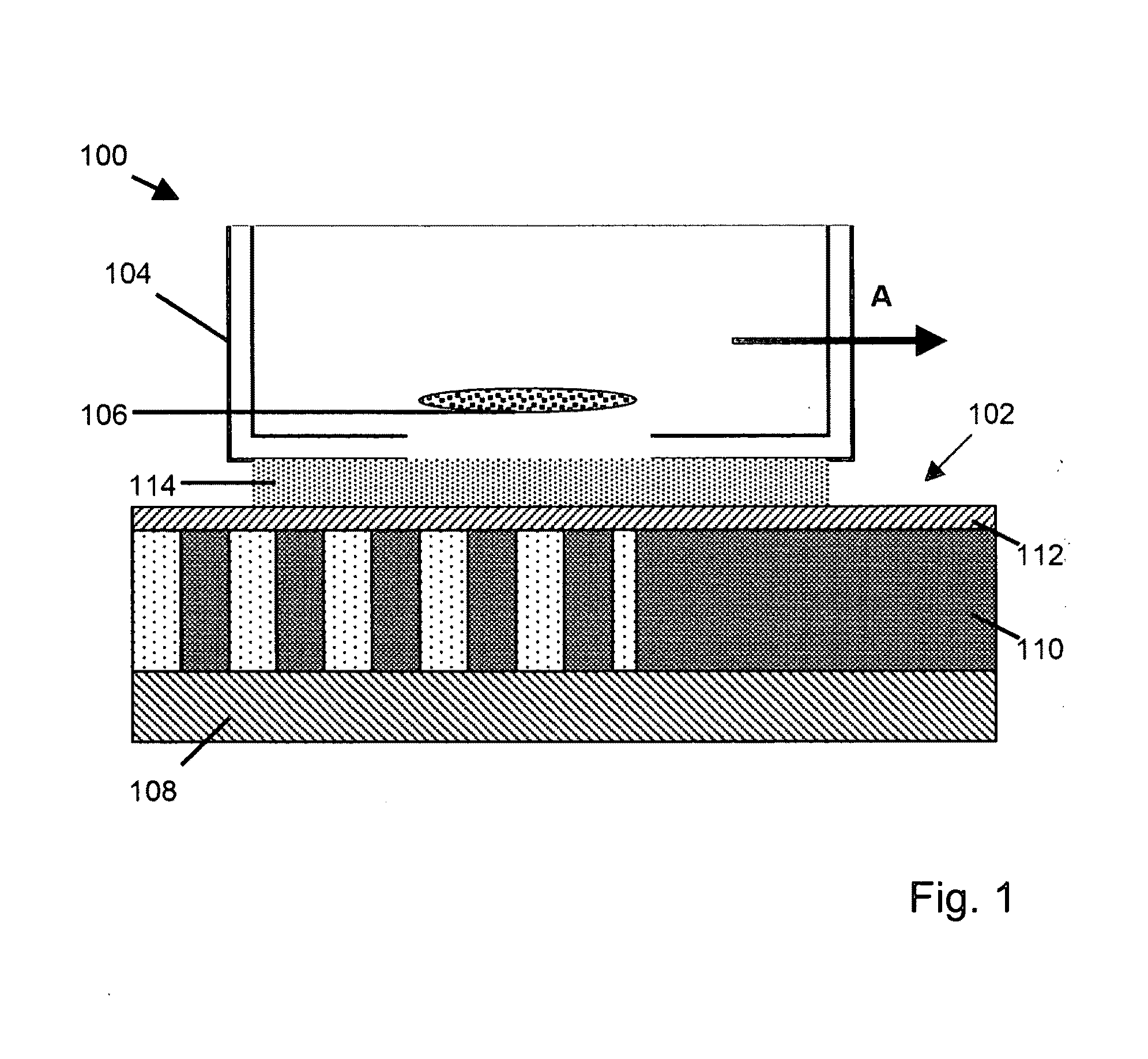Methods and systems for characterising and optimising immersion lithographic processing
a technology of immersion lithography and characterisation, applied in the field of lithography processing devices, can solve the problems of immersion lithography being more susceptible to variations, lithography further burdening critical dimension and resist profile control, and difficult control in thin resist lithographic processing
- Summary
- Abstract
- Description
- Claims
- Application Information
AI Technical Summary
Benefits of technology
Problems solved by technology
Method used
Image
Examples
first embodiment
[0053]The method 250 of the present invention, illustrated in FIG. 3, comprises the step 260 of determining at least one image performance characteristic as function of contact times between the immersion liquid typically used in the immersion lithography system that is to be characterised and the device. Such determination is performed on a device that is illuminated in a dry lithography process and that is contacted with the immersion liquid prior and / or after the illumination step. The latter implies that the contact or soak may be performed prior to the illumination step, such that a pre-soak is mimicked and / or may be performed after the illumination step, such that a post-soak is mimicked. Determining at least one image performance characteristic for a device may comprise determining a first image performance as function of contact time for a device contacted with said immersion liquid prior to said illumination and / or determining a second image performance characteristic as a ...
fourth embodiment
[0062]In a fourth embodiment, the present invention relates to an apparatus for controllably contacting a device with an immersion liquid that can be used in a method for characterising immersion lithographic processing using a virtual immersion lithography process as described above. Such an apparatus thus may be used in a set-up as shown in FIG. 4, e.g. as the contacting means 312. The apparatus for controllably contacting a device according to the present embodiment typically comprises a means for rotating a device and a means for dispensing that is adapted for dispensing the immersion liquid over the device in an at least partially radial dispensing movement with a controllable radial velocity. The at least partially radial dispensing movement may be an at least partially inwardly radial dispensing movement, i.e. wherein the dispensing movement is from the edge of the substrate towards the centre of the substrate. The means for rotating may allow rotating the device up to a few ...
fifth embodiment
[0063]In a fifth embodiment, the present invention relates to a processing system wherein the method embodiments according to the present invention are implemented. In other words, it relates to a processing system adapted for performing a method for characterising immersion lithographic processing of a device according to the present invention, comprising determining at least one image performance characteristic as function of contact times between an immersion liquid and a device, for a device illuminated in a dry lithography process and contacted with the immersion liquid prior and / or after the illumination and deriving based on the at least one determined image performance characteristic a lithography process characteristic for the immersion lithography process under study. Such a system may comprise a means for receiving values for at least one image performance characteristic as function of contact time between an immersion liquid and a device for a device illuminated in a dry...
PUM
 Login to View More
Login to View More Abstract
Description
Claims
Application Information
 Login to View More
Login to View More - R&D
- Intellectual Property
- Life Sciences
- Materials
- Tech Scout
- Unparalleled Data Quality
- Higher Quality Content
- 60% Fewer Hallucinations
Browse by: Latest US Patents, China's latest patents, Technical Efficacy Thesaurus, Application Domain, Technology Topic, Popular Technical Reports.
© 2025 PatSnap. All rights reserved.Legal|Privacy policy|Modern Slavery Act Transparency Statement|Sitemap|About US| Contact US: help@patsnap.com



